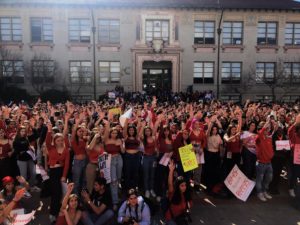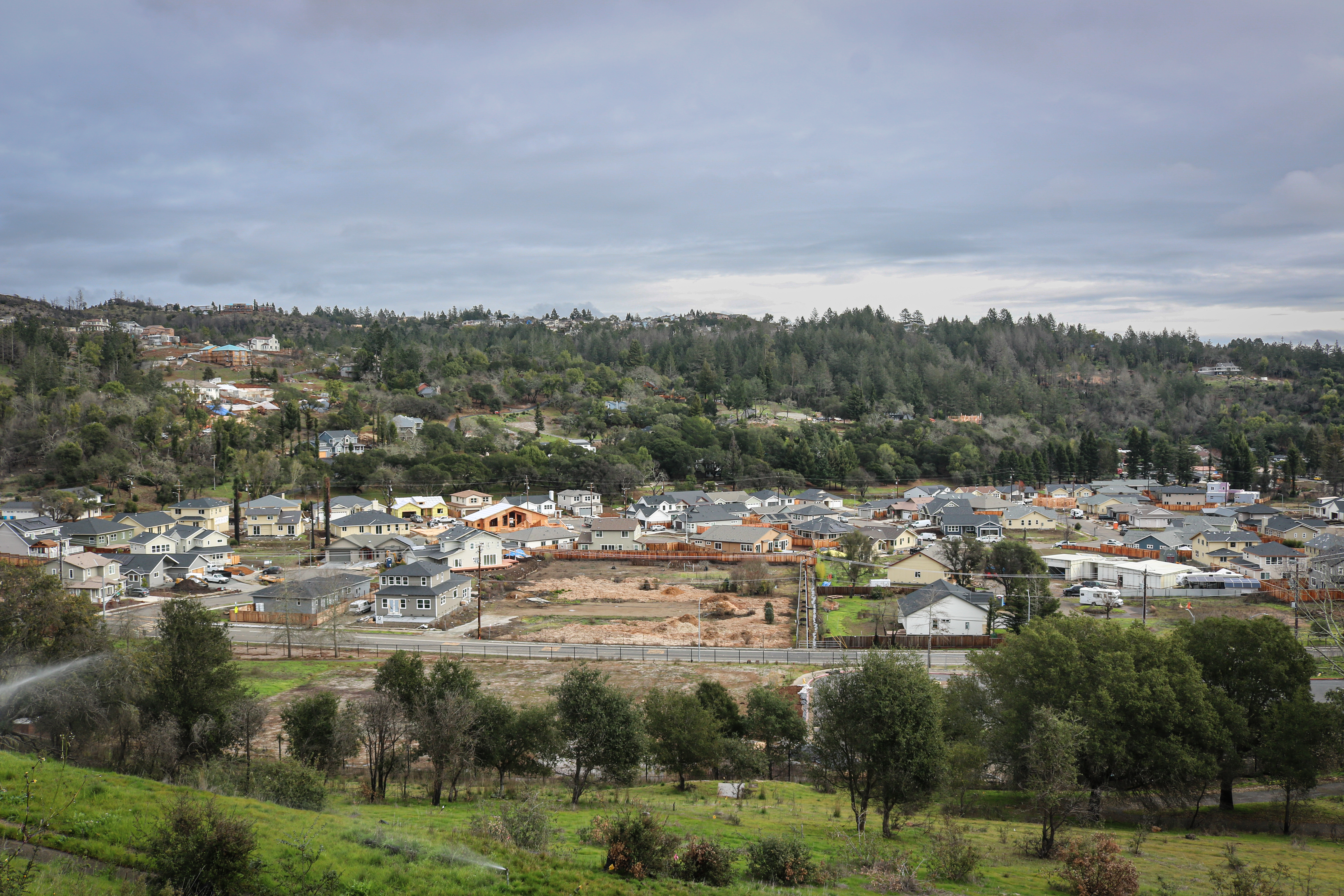
Photo by Gabe Castro-Root
When Jan Verspecht and Andrea Cromphout were directed to evacuate their home in Santa Rosa’s Fountaingrove neighborhood this past October, they knew the drill a little too well.
Since they moved from Belgium to Santa Rosa in 2012, Verspecht and Cromphout had already experienced more than their fair share of wildfires. Taking a calculated risk, they decided to remain at home, even as the Kincade Fire burned only a mile from their house. “We live in an area where there’s no longer fuel for these fires, so we felt pretty safe,” Verspecht said.
Just two years before, the situation was completely different. On the night of October 8, 2017, hurricane-force winds sparked the Tubbs Fire, a massive wildfire that tore through several neighborhoods in Santa Rosa, destroying nearly 37,000 acres and claiming 22 lives.
That night is one Verspecht and Cromphout will never forget. Around midnight, as he was getting ready for bed, Verspecht noticed a faint orange glow in the distance. It was far away, he said, so he didn’t worry too much.
As if it knew what was coming, their cat clawed at the door, trying to get inside.
At around 1 a.m., Verspecht and Cromphout were awakened by knocking at their front door. Friends who lived nearby had come to tell them that the fire was approaching, and they needed to evacuate. They gathered important documents and left in separate cars, with a plan to meet at Keysight Technologies, an electronics company where Verspecht worked.
As Verspecht drove, smoke made the air almost unbreathable. “The moon was blood red,” he said. “Ashes were falling out of the sky.” He and Cromphout met up, and after consolidating their belongings into one car, were directed to an evacuation center where they spent a sleepless night. At one point, the fire came so close that people at the evacuation center wondered if they needed to evacuate from there, too.
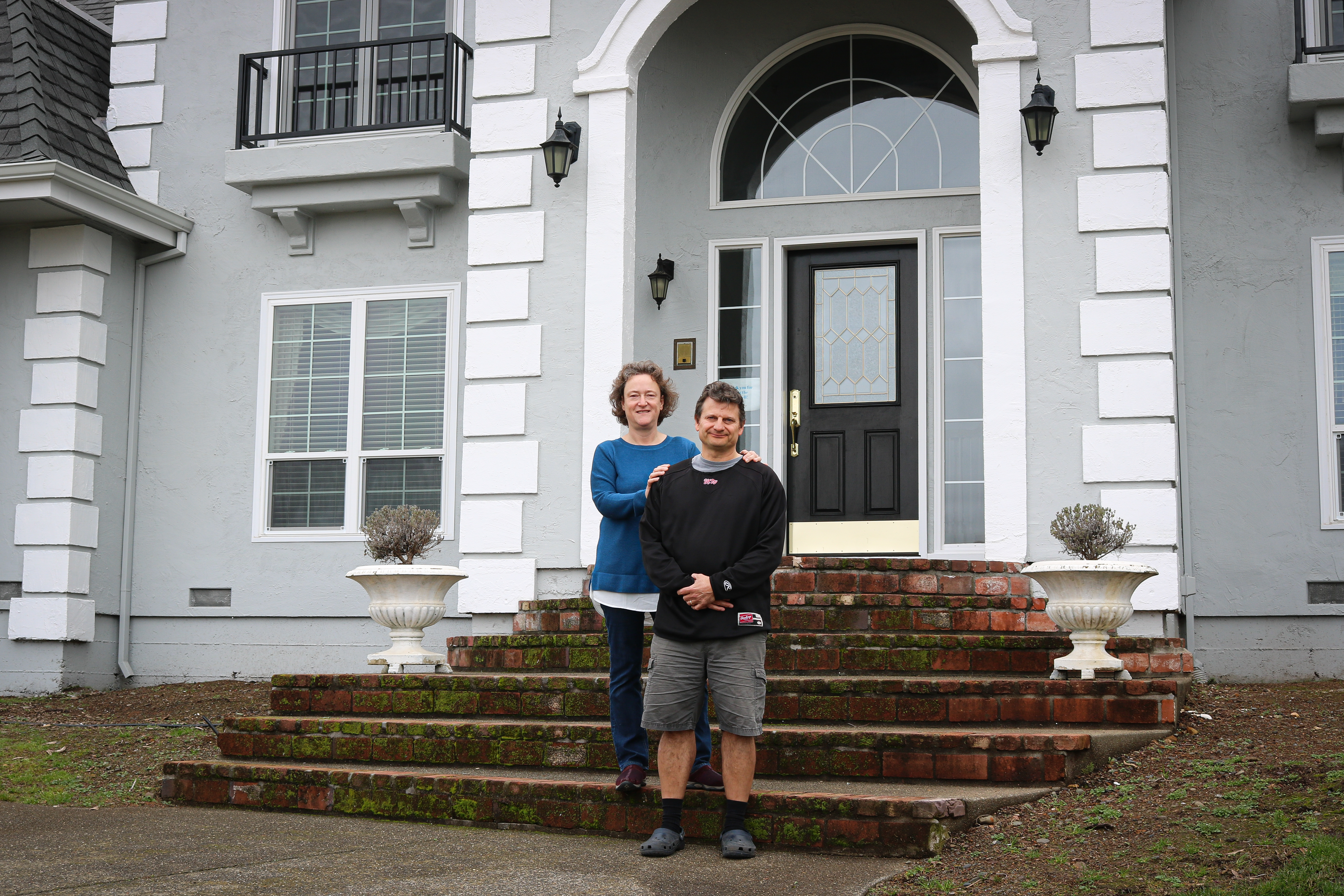
Photo by Gabe Castro-Root
Overnight, Verspecht and Cromphout had gotten word that their neighborhood had burned down. As they drove back the next morning to check on their house, they didn’t have high hopes. “As far as you could see, all the houses were gone,” Verspecht said, describing the landscape of what had been their neighborhood. “The thing that comes closest are the pictures you see from Hiroshima after the nuclear bomb. It really looked like a war zone.”
But miraculously, their house had survived. Amid miles of near total destruction, lush trees and a nearly intact lawn still surrounded the building, which, although damaged, was structurally intact.
By the time the Tubbs Fire was contained on October 31, the recovery effort was already well underway. Over 3,000 buildings had been destroyed across northern Santa Rosa, and Cal Fire, the state wildfire fighting agency, worked quickly to remove debris and put out the small fires that remained.
“The devastating effects of wildfires can have an impact on communities long after the flames have been fully extinguished,” Cal Fire said in a video on its website. As the rainy season approached that winter, even moderate rain had the potential to cause catastrophic damage to fire-affected areas. Burned earth is often unable to absorb water, greatly increasing the risk of floods and mudslides. To mitigate potential damage, firefighters cut down dead trees and installed straw wattles, which hold potentially mudslide-prone hills in place and slow water runoff.
The City of Santa Rosa was charged with restoring basic necessities—gas, electricity and clean water—to surviving buildings, but with so much infrastructure in need of repair, some residents were forced to go for months without those services.
City officials also held “Insurance Workshops” to assist residents with the process of filing claims and receiving compensation for damaged or destroyed property.
“Make sure you have good insurance,” Verspecht told me. “Some insurances really did bad things. They started to really not serve their customers as they should.”
Verspecht described how in order to get reimbursed, people who lost property in the fire were required by insurance companies to provide proof of all the items they lost. “But you can’t prove it!” he said. “Everything is gone. It’s actually quite cruel.” After intense public pressure, some insurance companies agreed to drop that requirement.
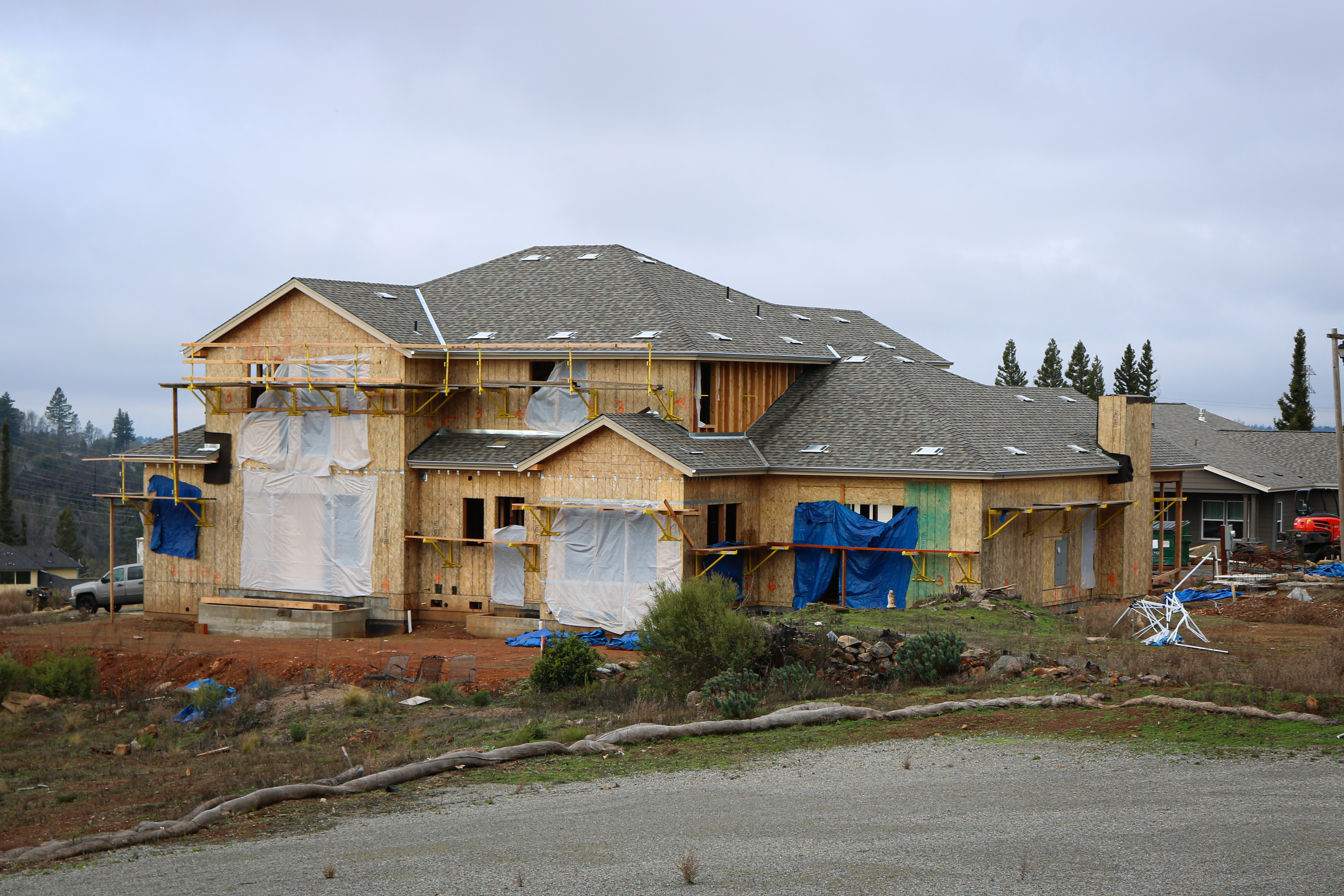
Photo by Gabe Castro-Root
For those who lost their homes, the most immediate concern after the fire was finding a place to stay. Jill Permutt, whose house burned down in the Tubbs Fire, said she and her husband stayed in several hotels and apartments while they searched for a new home. “I didn’t think I was going to come back to nothing,” she told me. “People say things aren’t important, but they really are, especially after you lose them.”
Permutt and her husband decided not to rebuild on the site of their previous house, which they had built themselves. “It would never be the same,” she said, to walk around the reconstructed house and think, “that’s where that thing I loved used to be.”
For displaced families who struggled to find or afford temporary housing, the Federal Emergency Management Agency (FEMA) stepped in to help. FEMA turned the Sonoma County Fairgrounds into a temporary trailer park, providing 120 trailers and RV’s for families who had lost their homes. The program extended through last summer, with officials removing the final trailers on July 10.
After stays at an Airbnb and a hotel, Verspecht and Cromphout decided to return home less than a month after the fire, though they were still without power. Verspecht, who has a degree in electronics, was eventually able to restore electricity and running water in the house. Finally, he said, “We were back into a comfortable situation.”
Their comfort didn’t last long. On November 11, 2017, the City of Santa Rosa issued a warning to Fountaingrove residents that traces of benzene, a flammable and carcinogenic compound, had been found in their drinking water. City officials believed the contamination resulted from plastic water pipes that melted in the fire.
As tanker trucks visited the neighborhood multiple times per week to supply homes with clean water, Verspecht looked for another solution. After a month, he installed a “big, giant water filter” next to the house, which he said was 100% effective in removing any contaminants from the water.
Other survivors faced different challenges. Lillian Shelan, whose Santa Rosa home was one of only four remaining buildings of sixty in her neighborhood, said that for her and her husband, recovery began by simply emptying the refrigerator. (A multi-day power outage does not pair well with perishable goods.) Though their house survived, it had sustained enough damage that they could not immediately move back in. As survivors scrambled to rebuild and repair, finding an available contractor became nearly impossible. It was seven months before Shelan and her husband were once again able to live in their house.
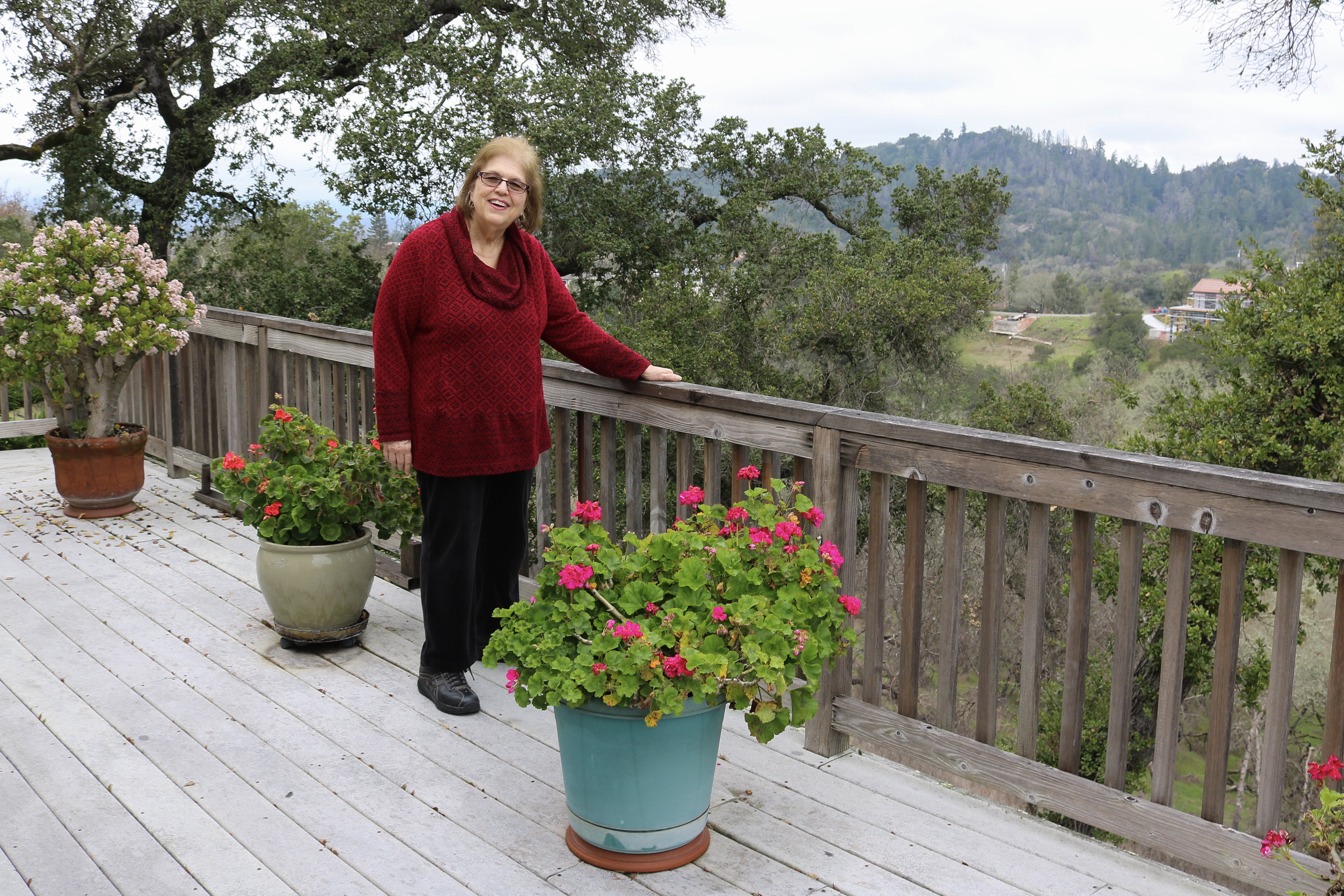
Photo by Gabe Castro-Root
“Let me tell you a story that gives me shivers to remember,” Shelan said when I met her at her house in late January. A month before the fire, she had seen her neighbor, Francois, thinning the vegetation on the edge of his property. “The fire department told me to do it, to save my house in case of a fire,” he told her. She recalled saying to him, “If there’s a fire, we’re all going to burn down.”
“Well,” she told me, “we didn’t, but he did.”
As we walked along the road near her house, Shelan told me about the neighbors who had lost their homes to the fire. Some were rebuilding, she said, while some had moved away. Others she was unsure about. “It’s been very slow,” she said of the effort to rebuild. “For all this time, even up to now, it’s devastation.”
When we paused at the top of the hill, a man approached Shelan and introduced himself as Francois’ contractor. After she told him the same story she had told me a few minutes before, she asked him if he could explain why her house survived while Francois’ had not. “God and luck,” he told her. “Nothing can survive a firestorm without God and luck.”
Just down the road, a beautiful, newly built house sat unoccupied, its bay windows gazing out over the hillside from where the Tubbs Fire had approached two years before. Construction crews were everywhere—the sounds of rebuilding are inescapable in northern Santa Rosa, and it seemed that every other vehicle on the road was a contractor’s truck.
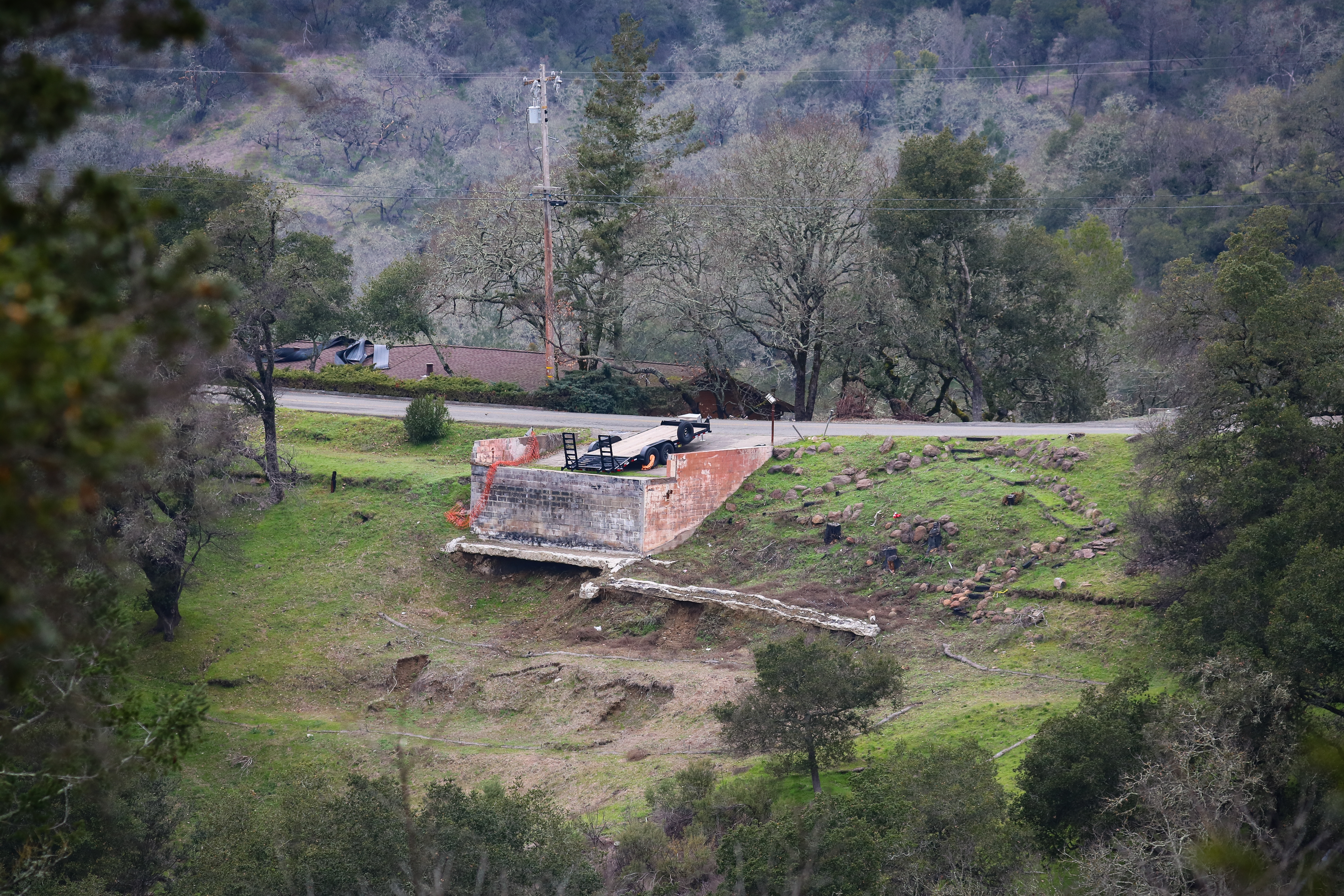
Photo by Gabe Castro-Root
As I drove to meet Verspecht and Cromphout, the scene remained largely unchanged. 605 parcels of land still sit barren across Fountaingrove, with rope and pieces of foundation demarcating where buildings once stood.
When I arrived at their house, Verspecht gave me what he called the “disaster tour.” Though there is no longer much visible damage on their property, the experience was still deeply moving. He pointed out their new gas meter, which replaced the one that melted in the fire. He showed me the charred trunks of the redwoods lining their property, from which new branches had begun to emerge. “The fire was minutes away from getting inside our house,” he said. He thought the redwoods had likely held back the fire long enough to allow firefighters to arrive in time to save the house.
All that was left of their neighbors’ house were the dilapidated remains of a swimming pool filled with chunks of concrete, tree limbs and a couple of wheelbarrows.
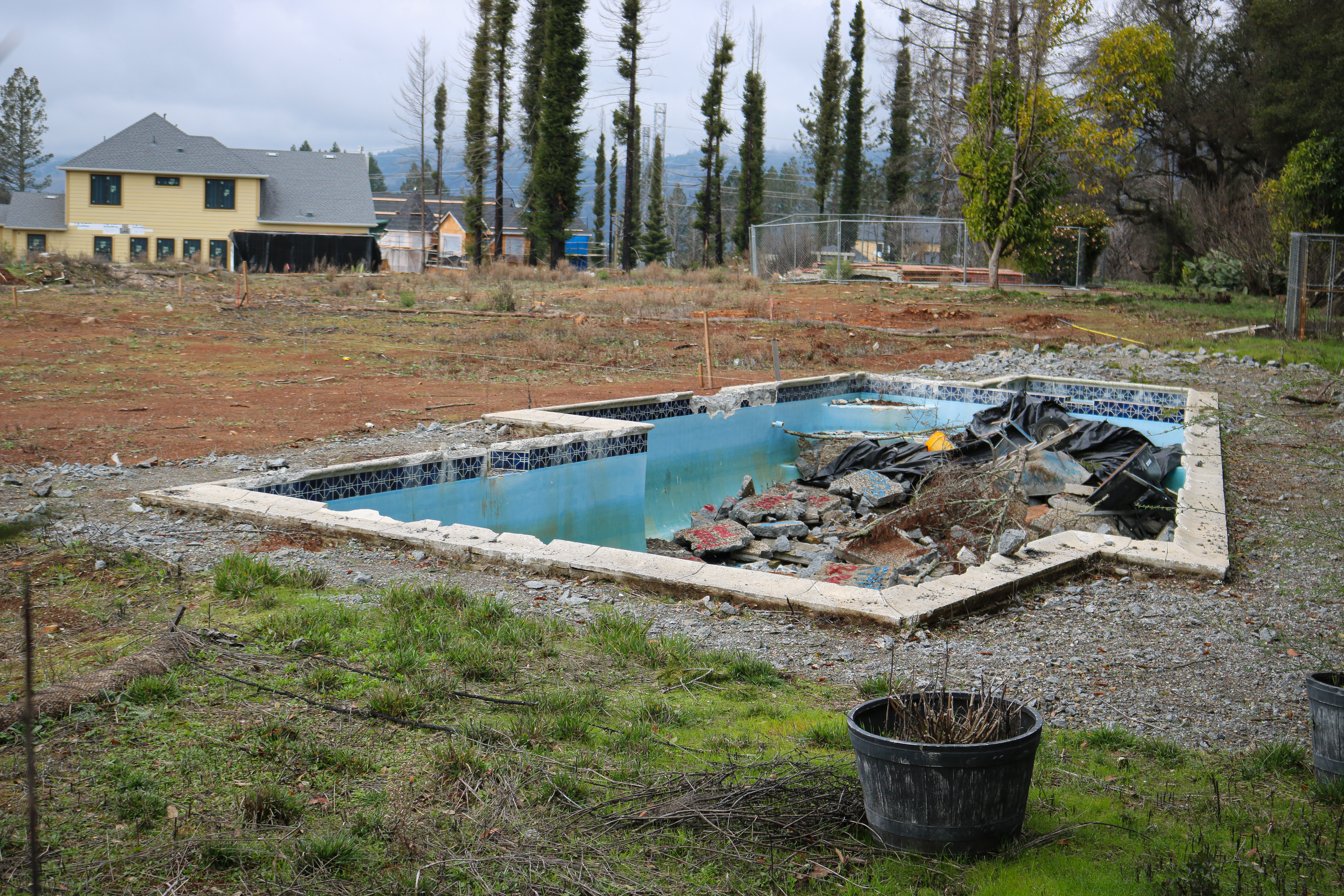
Photo by Gabe Castro-Root
Since the Tubbs Fire, Californians have grown accustomed to wildfires igniting across the state each year between August and November. In November 2018, just over a year after the Tubbs Fire, the Camp Fire burned 153,336 acres across Butte County, killing 85 people and destroying 18,804 buildings, including nearly the entire town of Paradise. Last year, the Kincade Fire burned 77,758 acres in Sonoma County, and multiple smaller wildfires ignited near Los Angeles.
As communities have recovered from these fires, they have also begun planning for future ones. Local officials across the state are working to streamline evacuation procedures, and most California counties have adopted variations of the Community Wildfire Protection Plan. The plan, which was developed by the California Fire Safe Council, includes such steps as “Increase community resilience and adaptation to wildfire,” “Increase residents’ ability to effectively prepare for and survive wildfire,” and “Restore beneficial fire at the landscape scale,” according to the Humboldt County government website.
Ryan Burnett, an ecologist at Point Blue Conservation Science who studies the effects of wildfires on bird and plant life, said that controlled burns would be particularly important in the effort to reduce the negative impacts of future fires. “It might seem counterintuitive, but if we burn more fires when the conditions aren’t so extreme, we might not have so many fires when the conditions are extreme,” he said. This technique, known as indigenous fire management because it was practiced by native people in North America and Australia, has seen a resurgence in recent years as landowners and fire officials have taken steps to reduce highly flammable understory growth.
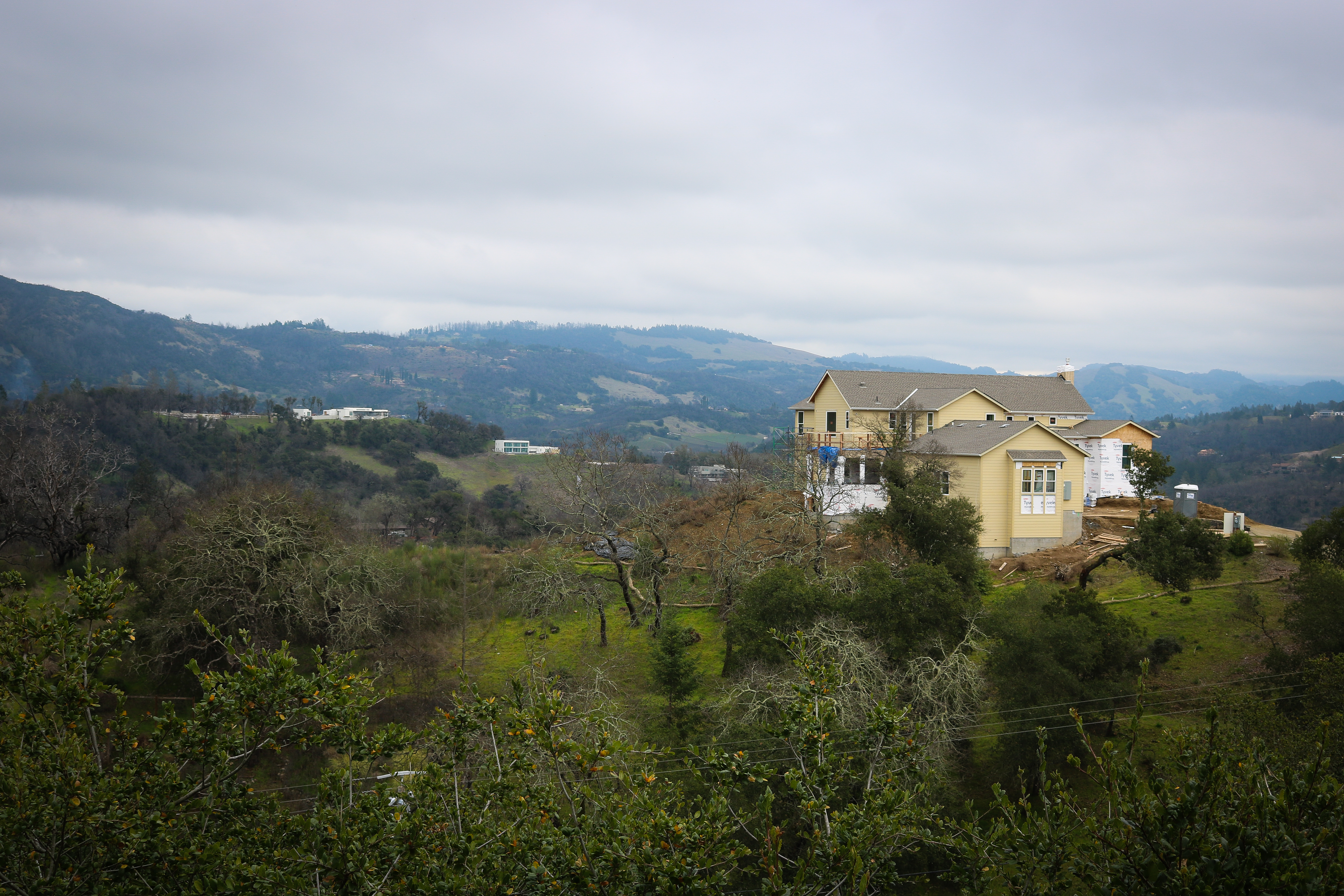
Photo by Gabe Castro-Root
PG&E, California’s largest utility, has also worked to reduce the risk of fires. After its equipment was found responsible for sparking the Camp Fire, the company implemented new Public Safety Power Shutoffs, a plan to cut power to thousands of homes and businesses across Northern California in an effort to preempt high winds that could have downed power lines and sparked fires. This past fall, the controversial blackouts left some residents and businesses without power for up to a week at a time.
As suburban communities continue to expand into once-forested areas, more and more people will be at risk when wildfires inevitably return in the fall. “We allowed communities to pop up in places that were not wise from a fire perspective,” Burnett said. “As climate change gets worse and worse here, we’re not going to get less of this.”




